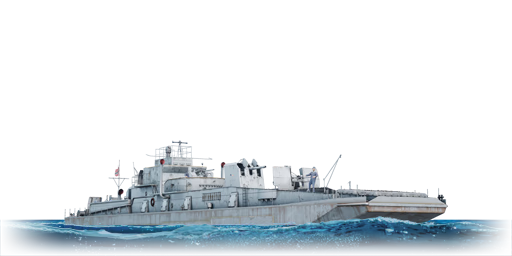The Artilleriefährprahm Typ D3 (or AF D3 for short) was a variant of the MF Typ A landing craft converted into a makeshift gunboat after the planned invasion of Great Britain was cancelled. Due to the makeshift conversion plans between shipyards, each AF Typ D landing craft was outfitted with different kinds of armaments and armouring, such as different gun layout and extra concrete coating. The Typ D3, compared to the Typ D1, differed in its armament, featuring heavier 10.5 cm cannons instead of the 8.8 cm Flak cannons. In total, around 700 of AF Typ D of all variants were converted, and they were used either as an auxiliary minelayer towed along by destroyers, or used inland as a fire support gunboat.
Introduced in Update 1.79 "Project X" in the fleet closed beta test, the AF D3 is essentially the AF D1 equipped with larger 105 mm cannons and slightly different AA armaments. The AF D3 generally performs well as a fire support vessel, as the 105 mm cannons offer a major firepower upgrade over the D1's 88 mm Flak, since it is capable of hull-breaking various PT boats with ease, and even capable of going toe-to-toe against early destroyers. However, being originally designed as a landing craft, the AF D3 is completely lacking in mobility, and struggles to handle multiple enemies at once. As such, positioning and proper support is the key to success in playing this makeshift gunboat.














